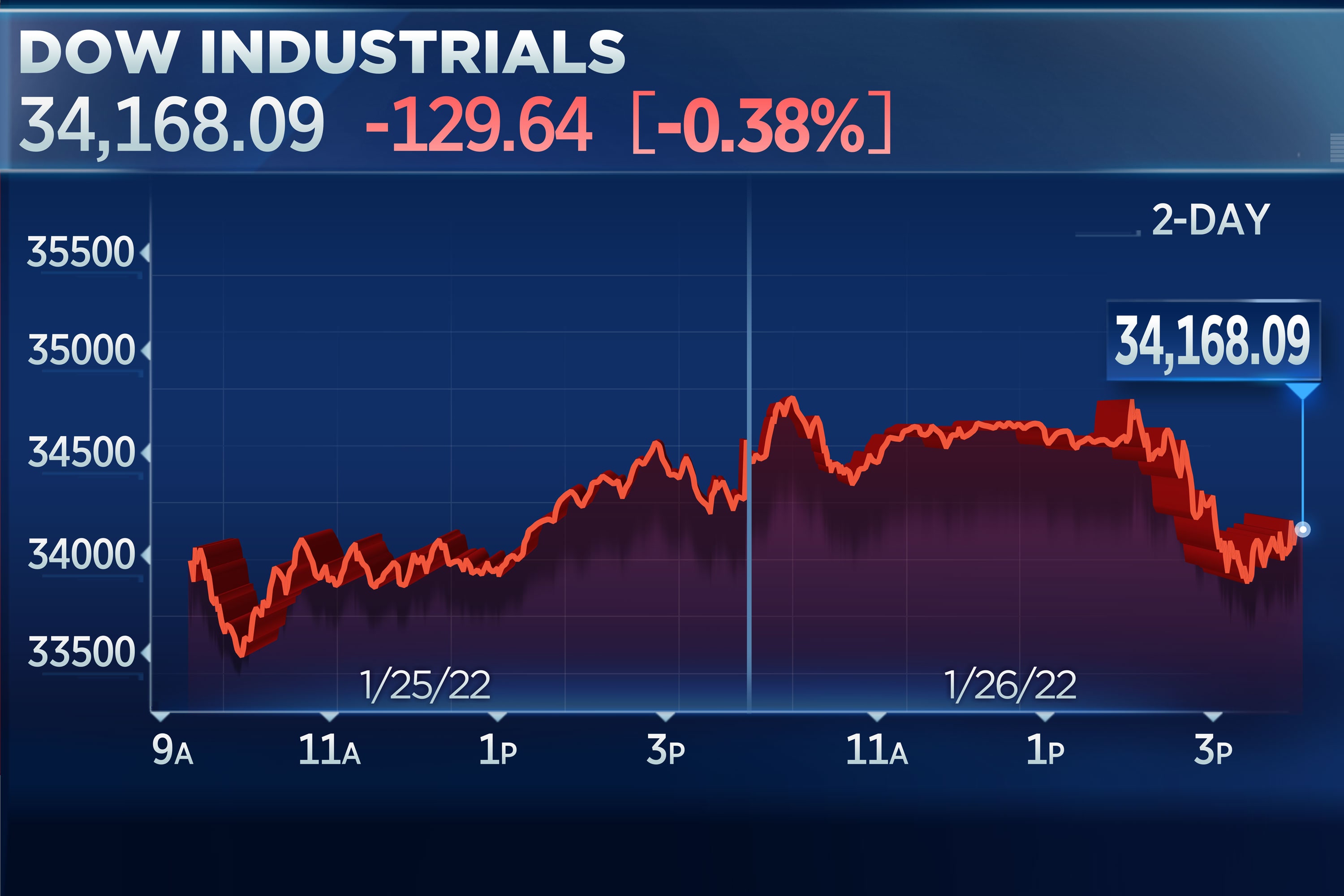
The Dow Jones Industrial Average fell in volatile trading Wednesday, after Federal Reserve Chairman Jerome Powell suggested the central bank has plenty of room to raise interest rates before it would harm the economy.
The blue-chip average fell 129.64 points, or 0.4%, to 34,168.09. The Dow was up more than 500 points at one point, but rolled over after the Fed’s update. The S&P 500 fell 0.2% to 4,349.93. The Nasdaq Composite finished little changed at 13,542.12, buoyed by Microsoft’s post-earnings gain.
Stocks came off their highs and Treasury yields surged after Powell said at a press conference there was “quite a bit of room” to raise interest rates before it would hurt the labor market. Powell also said prices could continue to run higher as “inflation risks are still to the upside.”
The benchmark 10-year Treasury yield climbed above 1.8% after Powell’s comments as traders took them to mean the central bank may be more aggressive in tightening policy, even with the markets in turmoil during January.
“After hearing Fed Chair Powell talk, it became clear the risk of more rate hikes was elevated and the earlier Wall Street rally fizzled,” Oanda’s Edward Moya said in a note.
The Fed signaled in a statement following its policy group’s January meeting that a quarter-percentage-point increase to its benchmark short-term borrowing rate could be coming as soon as March.
“With inflation well above 2 percent and a strong labor market, the Committee expects it will soon be appropriate to raise the target range for the federal funds rate,” the Federal Open Market Committee statement said. The Fed does not meet in February.
The announcement was expected, and stocks maintained their gains shortly after it was released. However, the market began to gyrate as Powell spoke, continuing a pattern of volatility this week in markets.
The Fed also indicated in a separate statement that it would begin shrinking its balance sheet after hiking rates, a further tightening action that many traders may have hoped the central bank would have held off doing right away.
“Jay does not want to go down as the Fed chair that kind of messed up 40 years of inflation-fighting credibility by getting too cute on the labor market, and I think that’s what we say today with Jay. He’s very concerned that this inflation needs to come down. He’s worried about it. He thinks it will happen, but he’s not going to take chances,” David Zervos, chief market strategist at Jefferies, said on CNBC’s “Closing Bell.”
Loading chart…
Wednesday marked the third consecutive roller-coaster trading session for markets, including a more than 1,000-point recovery for the Dow on Monday.
All three major indexes are decidedly negative in January. The Nasdaq is in correction territory, down more than 16% from its intraday high and off 13% for the month. The S&P 500 is down more than 8% to start the year and nearly 10% off its high.
Meanwhile, investors digested a strong quarterly report from Microsoft and other corporate earnings results.
Shares of Microsoft rose 2.9% after the company issued better-than-expected quarterly revenue guidance. The report boosted the major indexes and the tech sector earlier in the session before the Fed update.
Microsoft’s “conference call went well and ignited the market,” Scott Redler of T3Live said. Whether the stock’s rally holds “will tell us a lot about tech,” he added.
On the downside, Boeing fell 4.9% after the aircraft maker reported positive cash flow for the first time since 2019, but it took a $3.5 billion pre-tax charge on its 787 Dreamliner program.
—CNBC’s Patti Domm and Kevin Stankiewicz contributed to this report.




